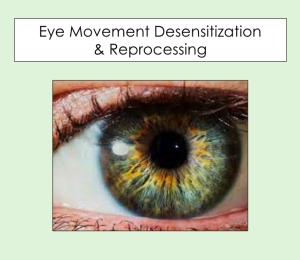Have you ever had a memory or experience that felt like it is haunting you, is hard to let go of, or comes up in repeated unwanted patterns in present day life? Feeling like our past is colliding with our present is a common occurrence and often means that the memory/experience wasn’t filed “neatly” away in the brain (such as with a start, middle & end narrative) as most of our memories are stored. Or in some cases we don’t consciously recall the source of our unwanted present day patterns or triggers, but have times of feeling emotionally hijacked. This is because our mind & body are still feeling the “charge” of the memory/experience. Eye Movement Desensitization & Reprocessing (EMDR) is an 8-Phase evidenced based therapeutic approach that targets traumatic experiences & has shown to have rapid & lasting results.
8-Phases of EMDR Therapy
Phase 1: History and Treatment Planning
Phase 2: Preparation
Phase 3: Assessment
Phase 4: Desensitization
Phase 5: Installation
Phase 6: Body Scan
Phase 7: Closure
Phase 8: Re-evaluation
How does it work?
EMDR gives attention to the past, present, and future to aid trauma resolution. A hallmark of the approach is its incorporation of bi-lateral stimulation (such as moving your eyes from left to right or alternating tapping on your left and right knees or shoulders), which is believed to function much like the processes that occur in REM sleep, which is related to processing memories. Therefore, in EMDR therapy, we identify a target memory, then desensitize and reprocess the memory, which helps to take the “charge” out of it. As a result, people no longer feel like they are being “plugged into an outlet” when a trigger comes up in the present and/or when recalling the memory.
This approach also suggests that when given the opportunity, the brain & body will lean towards healing. EMDR helps individuals tap into their own innate healing processes. For example, when a memory is reprocessed, the negative beliefs about the self decrease while adaptive, healing, and helpful views & positive beliefs about the self are strengthened.
What results can I expect?
I tell my clients, this research-backed approach has shown to bring RAPID and LASTING results, yet it is also hard trauma work that can be triggering at times. Even so, unlike other trauma therapy approaches, a unique aspect of EMDR is that you can experience the full benefits of EMDR without having to discuss the trauma in great detail. You can simply hold it in mind and verbalize the parts you are comfortable with sharing. After an EMDR session of memory reprocessing many people experience relief, peace, and/or relaxation.
Temporary physical symptoms are sometimes experienced after the session (such as fatigue, upset stomach, etc.). This is simply part of the body’s innate healing process which works to release what was stored in the body from the memory. In time, those symptoms ease and positive emotions strengthen. Also after an EMDR session, the brain continues to make new adaptive connections & individuals often report additional helpful insights at the reevaluation phase. After the memory work is complete, then a preferred template for future responses to the focus issue is established & strengthened. This therapeutic work is often a transformative process that enables you to file away the past to help you live more fully in the present and set you up for the future you desire.
If you’re interested in learning more about EMDR or locating an EMDR provider near you, you can access the EMDR International Association’s website at https://www.emdria.org/ for more information.




